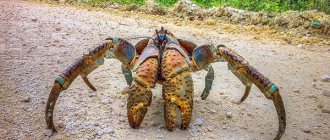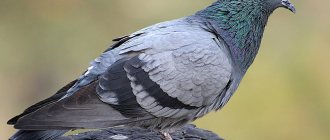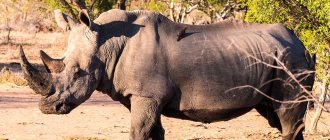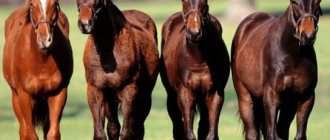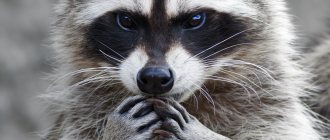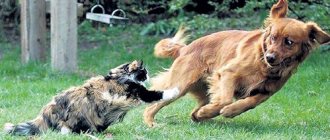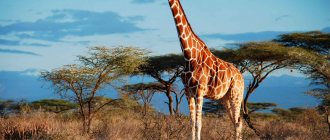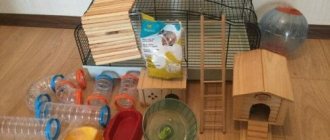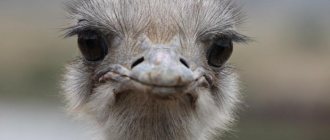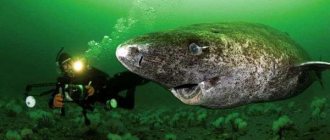Ezo Momonga is a miniature and very cute flying squirrel, also called the Siberian flying squirrel. The only place on the planet where it lives is the Japanese island of Hokkaido. Once upon a time this island was integral with the mainland of Siberia. As a result of rising sea levels, part of the land was flooded and a piece of land separated by water became the island of Hokkaido. Since then, some Siberian animals live exclusively there.
Ezo Momonga is one of the most popular representatives of the animal kingdom of Hokkaido. People are interested in her not because they know of her historical connection with the land of Siberia, but because she is simply charming.
How do they look?
Ezo momongs are almost identical to Japanese dwarf flying squirrels and differ from them only in color. The Japanese pygmy flying squirrel is gray-brown in color with a white belly. Ezo Momonga has a gray coloration, a black belly and a noticeable, also black, stripe on his back.
It’s not for nothing that these mammals are called dwarf – their total length, on average, is about 340 mm. Including, the tail length is from 90 to 140 mm, and the body length is from 130 to 200 mm.
The combination of their small size and silver-gray fur plays a huge role in the defense mechanism of these animals because they are incredibly difficult to see in a tree. Merging with the bark, they look like a spruce or pine cone, confusing predators.
Description of the flying squirrel
The animal belongs to the Marsupial family. It differs from other representatives by the presence of wide leathery plates between the front and hind legs. Thanks to them, the animal is able to soar in the air and cover distances of up to 60 m. If necessary, squirrels change their flight path so as not to collide, for example, with tree branches.
Adult sizes range from 17-21 cm in length. At the same time, males are slightly larger than females. In terms of size, flying squirrels are inferior to ordinary squirrels. The weight of an adult animal rarely exceeds 170 g. The animals have gained popularity among breeders due to the fact that they adapt well to home conditions. The lifespan of flying squirrels with good care is 15-17 years, and their price varies from $35 to 200.
What does a flying squirrel look like?
It is difficult to distinguish a flying rodent from an ordinary one at first glance. They also have a bushy tail and uniform fur coloring. However, there are a number of features, in addition to dimensions, by which the sugar possum can be differentiated:
- the presence of a leathery fold on the side;
- huge eyes, thanks to which the animal is well oriented in space during the day and night;
- thick coat.
The animal has sharp claws on its paws, just like ordinary squirrels. They are designed to help the rodent move deftly through trees. The flying squirrel changes fur color depending on the time of year. In summer they turn red, and in winter they turn gray-beige. Such changes are necessary for animals to camouflage. This way they blend better with the outside environment and become invisible to predators.
How do they fly?
While the bat's patagium (wings or sliding membrane) is attached to the tips of its forelimbs and down to the tip of its tail, the edzo momonga's patagium is attached to the wrists and ankles. Despite the name "flying squirrels", they are more likely to glide through the air, like the main character in the movie Spider-Man: Homecoming. In fact, when creating gliding suits, people tried to imitate the flying squirrel.
The size of their membrane is deceptively small - these gliders are known to be able to “glide” over a distance of more than 100 meters at a time. When an animal sits on a tree, its bushy tail helps it balance, acting as an air brake.
The Siberian flying squirrel chooses coniferous trees for its nests - pine or spruce, found in old forests. They like to live in secluded hollows made by woodpeckers. If there are a large number of these birds in the forest, it means that the squirrels are nearby.
Ezo Momonga is mainly a tree dweller who rarely comes down to the ground. Several individuals of the same sex live on the same tree, except during the mating season, during which they gather in mixed groups.
Flying squirrel - species
There are 10 types of flying squirrels living in nature. Of these, only 7 live in Russia. They differ in their habitat and external features. The most popular species that are bred at home:
- Siberian
. Continues to stay awake in the winter and feed on reserves made in the summer. The number of animals is declining due to the fact that not all of them survive severe frosts. - Japanese
flying squirrel. Lives in evergreen coniferous forests. The squirrel insulates its nests with moss and lichen. - Australian
or sugar flying squirrel. Lives in regions with warm climates. The number of animals is declining due to poaching, so organizations have been created to save flying squirrels from illegal extermination.
Reproduction
Rodents mate only once or twice a year, during the mating season, from May to July. After conception, the gestation period lasts 4 weeks. These squirrels can give birth to 1 to 5 offspring at a time. On average, they only give birth to 2 or 3 baby squirrels.
Baby squirrels are born with their eyes closed and without fur. Internal organs are usually visible through the skin. During the first time after birth, babies are completely helpless and completely dependent on their mother.
Typically, a week after birth, their skin darkens and fur begins to appear. After the second week, most babies' toes are already separated from each other, and the ear canals also begin to open. During the same period of time, the cubs acquire the ability to move their tails and whiskers on their faces.
After the third week, baby squirrels become increasingly sensitive to loud noises, and their fur becomes thicker. In the fourth week, the eyes open completely and the body is covered with fluffy fur. This is the period when they try to eat the food their mother brings. At the 5th week, the babies make forays outside the nest.
Flying squirrel - how to care for it at home?
The main rule that breeders must adhere to is to buy animals in pairs. Rodents cannot live alone for a long time. At home, the flying squirrel is able to adapt to the owner’s daily routine, although these animals are nocturnal. Rodent care, in addition to the above, includes:
- cleansing the cell - at least once a day;
- arrangement of the enclosure;
- selection of suitable feed;
- daily water change;
- regular animal walks.
What to feed a flying squirrel at home?
Feeding pets is different from what wild rodents eat. Their diet should include at least 70% plant foods. Every other day, the animals should be given cereals in the form of muesli or porridge with milk. List of foods that flying squirrels eat:
- zucchini;
- pumpkin;
- pears;
- mango;
- melons;
- watermelons;
- seasonal cucumbers;
- carrot;
- protein food: caterpillars, insect larvae, beetles;
- boiled chicken protein;
- low-fat yogurt and cottage cheese.
Daily portions for the animal:
- worms – 6-8 pcs.;
- chicken fillet – 20 g;
- eggs – 1/2 pcs.;
- fruits – 40 g;
- dried fruits – 1-2 pcs. (except prunes);
- nuts – 1-2 pcs.;
- fermented milk products – up to 50 ml.
Diet
The diet of edzo momonga includes leaves, seeds, buds, cones, sprouts, berries, fruits, nuts, and sometimes insects and even bird eggs. Flying squirrels eat in an unusual way: while eating, they hang upside down on a branch. In this position, they stretch their bodies and reach for any available food, instead of moving around in search of food.
Since this mammal feeds on pine seeds, it thus plays an important role in the ecosystem. By simply eating the tree's seeds, squirrels become their primary natural dispersers, helping the pine tree survive.
Range, habitats
The lesser flying squirrel, as an endemic to Japan, lives exclusively on several Japanese islands - Kyushu, Honshu, Shikoku and Hokkaido.
This is interesting! Residents of the latter island, who consider the animal a local landmark, placed its portrait on regional train tickets (intended for multiple use).
Momongs inhabit mountain island forests where coniferous evergreen trees grow.
Return to content
Lifestyle
Siberian flying squirrels are strictly nocturnal creatures that spend daytime hours in their nests or tree hollows, emerging from their hiding places only at dusk.
These rodents are silent gliders and move quickly among treetops to avoid potential predators. They can only be hunted by nocturnal predators such as martens, owls and wild cats, which also live on the Hokkaido Islands. Flying squirrels are extremely cautious animals. After landing on a tree, they run to the other side of the trunk to get rid of any predators that might be following them as they slide.
Ezo momonga do not hibernate and are active throughout the year. However, in winter they sometimes sleep for several days at a time.
Nothing is known about the communication and behavior of this species, although these animals are thought to use vocalizations, including rattling sounds. Additionally, since newborns share nests with their mothers, it is assumed that mothers and their babies use certain types of tactile communication.
The exact lifespan of this animal is not known with certainty, although other flying squirrels typically live 4–5 years in the wild and as long as 10–15 years in captivity.
Number and security
In order to survive the winter calmly, the animal needs to make good food supplies and make a warm nest.
Despite the fact that flying squirrels actively breed, they are protected by public organizations and are listed in the Red Books of different countries and regions. A large number of animals do not survive during harsh winters, and many cubs die due to other various circumstances. As a result, the number of flying squirrels in various habitats is declining.
Taming occurs in the following order:
- The cage is placed in a room with dim light. It's okay, the animal sees perfectly in the dark. It can be turned on when a person enters the room. You need to remember that you need to talk to them periodically;
- The taming process is not complete without delicacies such as berries and fruits. The food is placed on the palm, the hand is brought inside the cage (slowly), and they wait until the animal, under temptation, crawls towards the hand for the tasty treat. At first, Momonga may grab and run away, but soon he will calmly sit in the palm of his hand and enjoy the berries;
- As soon as the animal has become accustomed to the hand, instead of berries, ordinary food and nuts are placed in the palm. The flying squirrel will also continue to take food from the person. The main thing is to wait until the animal sits and eats for a long time;
- You can tell when trust has been achieved by whistling. If a flying squirrel whistles and jumps when entering a room, it means that it is glad that its owner is coming and wants to play with him or eat. And only after all this can the animal be taken for walks outside the cage.
Evolution [edit]
Japanese dwarf flying squirrels have evolved differently than other Sciuridae. Differences between Japanese dwarf flying squirrels and other Sciuridae are apparent when comparing mandibular morphology and genetic code. The lower jaw of the Japanese dwarf flying squirrel does not have a coronoid process, unlike the American dwarf squirrels ( Microsciurus
).
Marmots ( Marmota
) also have a more elongated lower jaw than the Japanese dwarf flying squirrel.
This is related to phylogeny and ecology. [7] There are also large differences in chromosome structure between P. momonga
and the only other member of the
Pteromys
,
Pteromys volans.
.
Although they have the same number of chromosomes (2n = 38), their karyotypes are very different due to pericentric inversions, tandem fusions, and deletions of large segments of autosomes and the Y chromosome. Due to these deletions, the P. volans
contains approximately fifteen percent less DNA than
P. momonga
.
These data suggest that the karyotype of P. momonga
more closely resembles the ancestor of
P. volans
and
P. momonga
. [8]
Population and species status
The coat of the Japanese flying squirrel resembles the fluffy and delicate fur of a chinchilla. It could be used for finishing outerwear or sewing fur products, if not for its low wear resistance. That is why momonga has never been the object of commercial hunting. However, due to the small population size, the species was included in the Red List of the International Union for Conservation of Nature in 2016 with the wording “endangered”.
This is interesting! The Japanese are so attached to their “edzo momonga” that they not only constantly draw these fluffy cuties, but have also started producing soft toys with the appearance of Japanese flying squirrels.
Return to content
What predators hunt the Japanese squirrel
The Japanese squirrel is hunted by foxes, martens, crows, predators, as well as domestic cats and dogs. If threatened by predators, the squirrel will run in a somewhat unpredictable zigzag pattern toward the safety of a tree or burrow. If it has not yet been seen, then it will also freeze motionless on a branch or trunk so that the predator does not notice. Their grayish-brown fur can help them blend in.
What does a Japanese squirrel eat?
The Japanese squirrel is technically an omnivore. Although Japanese squirrels are known to eat insects, their diet mainly consists of seeds, buds, fruits, mushrooms and flowers. The Japanese walnut appears to be an important item in its diet; The squirrel opens the shell by chewing the fold and then separating it into two parts. Food is collected and buried in underground caches or trees each fall when it is abundant so it can be accessed during the cold winter months. Smaller nuts and seeds are usually eaten immediately, while larger seeds are usually stored in the ground. We can say that the squirrel is a connoisseur of seeds and nuts. Only the most nutritious foods are selected.
